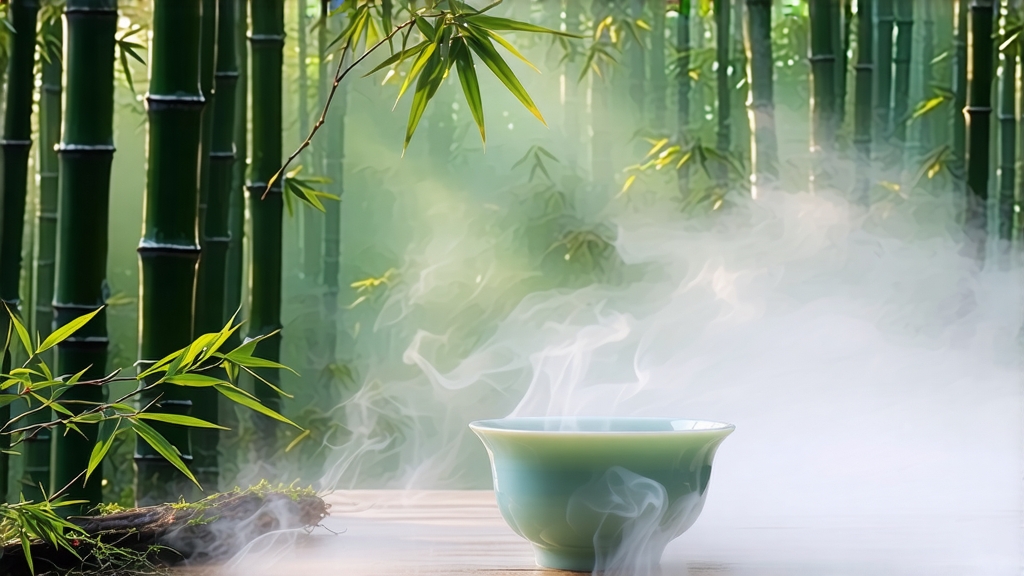
Among the hundreds of green teas that perfume China’s mountains and markets, one variety is so pale that it is called “white,” yet so green in spirit that it belongs to the green tea family. Anji White Tea—Anji Baicha in pinyin—has bewildered novices and connoisseurs alike since the 1990s, when a once-lost Song-dynasty tribute leaf was rediscovered in a narrow bamboo corridor of northern Zhejiang Province. Today it is the darling of sommeliers from Shanghai to San Francisco, prized for its jade-white needles, bamboo-sweet aroma, and an amino-acid profile that delivers umami without the grassy bite common to greener greens. To understand why this tea behaves like a white-clad green, one must travel back a thousand years, then forward to the micro-climate of a single county whose winter frost lasts two weeks longer than the valleys below.
Historical whispers
The first written record appears in Lu Yu’s Classic of Tea (760 CE), but the cultivar itself vanished during the Yuan turmoil. A single 300-year-old mother bush was found in 1982 by tea researchers who noticed that its spring buds stayed albino for seven days before chlorophyll slowly tinted the leaves. Cuttings from that bush became the genetic foundation of every Anji White Tea garden today. Song Emperor Huizong had once praised “the tea that looks like jade feathers and tastes like sweet dew,” and modern chemists proved his palate right: the albino phase contains almost twice the theanine of ordinary green tea, while catechins remain low, creating a rare balance of sweetness and calm clarity.
Cultivar and micro-terroir
The tea is made exclusively from the “Baiye #1” clone, a temperature-sensitive shrub whose leaves lose chlorophyll below 23 °C. Gardens sit between 200–800 m on north-facing slopes of the Tianmu mountain range, shrouded by 60 % bamboo canopy that filters light, drops nighttime temperature, and perfumes the air with coumarin. The soil is silica-rich loam derived from weathered quartz porphyry; drainage is so rapid that roots dive two metres in search of water, concentrating amino acids. Farmers plant every seventh row with bamboo as a living trellis, creating a humid breeze that discourages insect pests without chemicals. The result is a leaf that is almost white on the bush, yet technically green because enzymatic oxidation is halted by pan-fire within hours of plucking.
Plucking calendar
The harvest window is cruelly short: when the average daily temperature stabilises above 15 °C, the albino window closes. Experienced pickers watch the bamboo shoots; if the bamboo sheath reveals one purple stripe, the tea bud is still jade. Two stripes, and the moment is lost. Only the single bud and the immediate sub-terminal leaf are taken, a grade called “Feather of Jade.” One kilogram of finished tea requires 55 000 such sets, all plucked before 10 a.m. while dew still acts as a natural buffer against bruising.
Crafting the jade feather
Within thirty minutes of plching the leaves arrive at the village cooperative, spread 3 cm thick on bamboo trays, and are left to wither for 90 minutes in a 12 °C corridor. This short wither is unique among green teas; it allows excess moisture to evaporate while preserving the albino colour. Next comes “sha-qing” or kill-green, performed in a drum pan heated to 260 °C for exactly 90 seconds. Masters listen: when the rustle becomes a metallic clatter, enzymes are neutralised. The leaves are then rolled for four minutes under 6 kg pressure to break 35 % of cell walls—enough to shape the needle but not to release bitter catechins. The final low-temperature bake cycles between 80 °C and 60 °C for 40 minutes, reducing moisture to 5 % while locking in a faint bamboo-smoke note. When done correctly, the dry leaf resembles a straight pine needle, jade white with a silver ridge down the spine.
Grades and nomenclature
Western vendors often label everything “Anji White,” but Chinese merchants recognise four grades tied to plucking time and leaf posture. “King’s Feather” (Yu Huang) is 100 % bud, harvested on the first three days. “Phoenix Eye” (Feng Yan) adds one leaf, the bud still longer